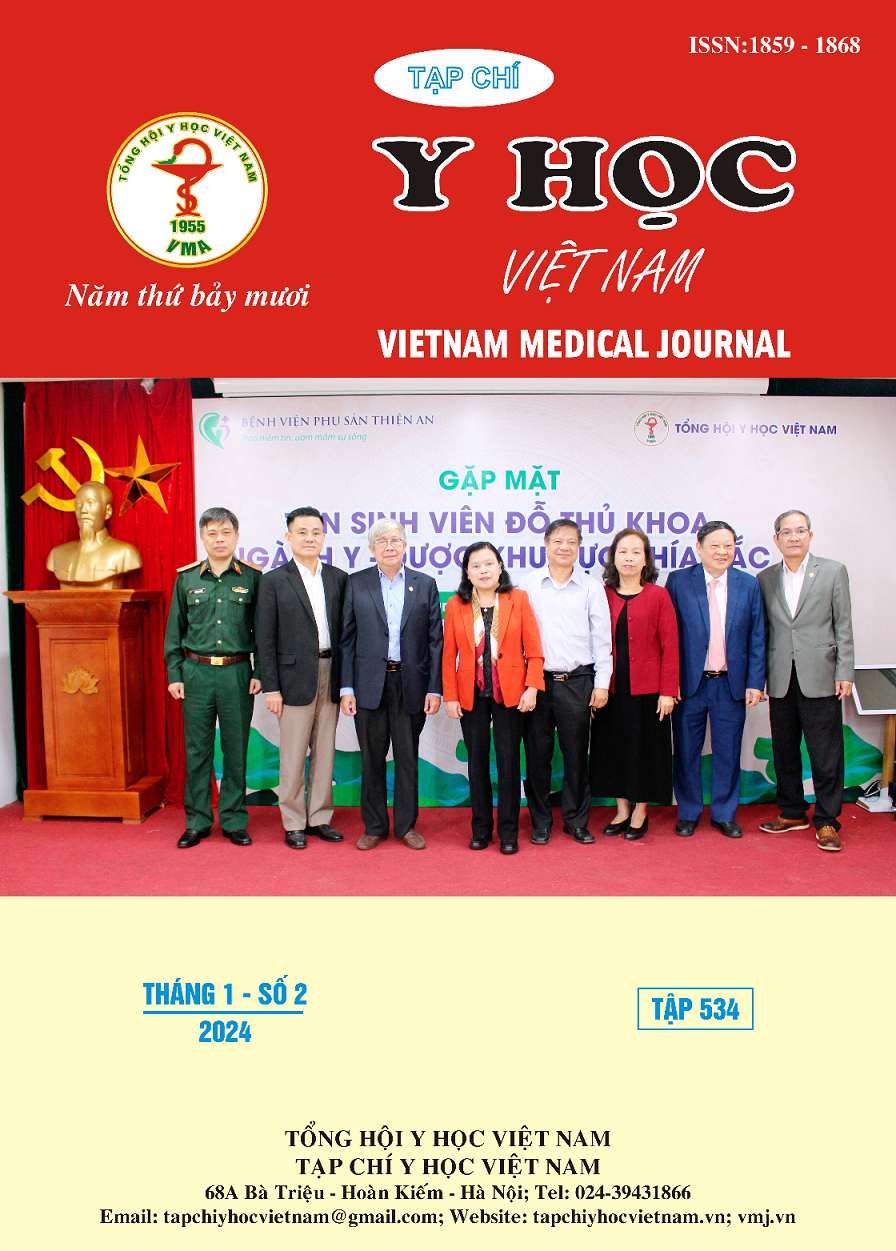ĐẶC ĐIỂM LÂM SÀNG, CẬN LÂM SÀNG VÀ KẾT QUẢ ĐIỀU TRỊ VIÊM NHIỄM VÙNG SÀN MIỆNG DO RĂNG
Nội dung chính của bài viết
Tóm tắt
Mục tiêu: Mô tả đặc điểm lâm sàng, cận lâm sàng của BN viêm nhiễm vùng sàn miệng do răng tại một số bệnh viện ở Hà Nội trong thời gian từ 2022 - 2023 và kết quả điều trị của nhóm BN nghiên cứu. Đối tượng và phương pháp nghiên cứu: Nghiên cứu mô tả chùm ca bệnh trên 30 BN được chẩn đoán xác định viêm nhiễm vùng sàn miệng do răng điều trị tại bệnh viện Đại học Y Hà Nội, bệnh viện Hữu Nghị Việt Đức từ tháng 07/2022 đến tháng 07/2023. Kết quả: BN từ 45 tuổi trở lên chiếm đa số với 86,7%. Nguyên nhân chủ yếu là do đau răng 8 với 16 BN, chiếm 53,3%. Có 19 BN, chiếm 63,3% có bệnh toàn thân kèm theo. Triệu chứng cơ năng hay gặp nhất là nuốt đau chiếm 90%. Vị trí nhiễm khuẩn hay gặp nhất là khoang dưới hàm (83,3%). Phần lớn BN có biến chứng lan rộng ra xung quanh chiếm 70%. Tất cả các BN đều được phẫu thuật dẫn lưu mủ, kháng sinh toàn thân và chăm sóc tại chỗ. Kết quả điều trị có 36,7% BN đạt mức tốt, 56,67% đạt mức khá và 6,67% đạt mức kém, không có BN nào tử vong. Kết luận: Bệnh lý viêm nhiễm vùng sàn miệng là biến chứng nguy hiểm của bệnh lý răng miệng, chủ yếu do viêm nhiễm răng số 8. BN thường đến khi triệu chứng lan rộng ra xung quanh. Điều trị chính phẫu thuật dẫn lưu mủ, kết quả tốt chiếm 36,7% còn chưa cao.
Từ khóa: viêm nhiễm sàn miệng
Chi tiết bài viết
Tài liệu tham khảo
2. Flynn TR, Shanti RM, Hayes C. Severe odontogenic infections, part 2: prospective outcomes study. J Oral Maxillofac Surg. 2006; 64(7): 1104-1113. doi: 10.1016/j.joms. 2006.03. 031
3. Uluibau IC, Jaunay T, Goss AN. Severe odontogenic infections. Aust Dent J. 2005;50(4 Suppl 2): S74-81. doi: 10.1111/j.1834-7819. 2005.tb00390.x
4. Wang J, Ahani A, Pogrel MA. A five-year retrospective study of odontogenic maxillofacial infections in a large urban public hospital. Int J Oral Maxillofac Surg. 2005;34(6):646-649. doi:10. 1016/j.ijom.2005.03.001
5. Ko HH, Chien WC, Lin YH, Chung CH, Cheng SJ. Examining the correlation between diabetes and odontogenic infection: A nationwide, retrospective, matched-cohort study in Taiwan. PLOS ONE. 2017;12(6): e0178941. doi:10.1371/ journal.pone.0178941
6. Fang M, Ishigami J, Echouffo-Tcheugui JB, Lutsey PL, Pankow JS, Selvin E. Diabetes and the risk of hospitalisation for infection: the Atherosclerosis Risk in Communities (ARIC) study. Diabetologia. 2021;64(11): 2458-2465. doi:10. 1007/s00125-021-05522-3
7. An J, Madeo J, Singhal M. Ludwig Angina. In: StatPearls. StatPearls Publishing; 2023. Accessed September 26, 2023. http://www.ncbi. nlm.nih.gov/books/NBK482354/
8. López-González E, Vitales-Noyola M, González-Amaro AM, et al. Aerobic and anaerobic microorganisms and antibiotic sensitivity of odontogenic maxillofacial infections. Odontology. 2019;107(3): 409-417. doi:10.1007/ s10266-019-00414-w


